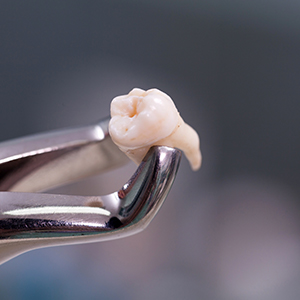
Tooth extraction is one of the most common dental procedures experienced by both adults and children. However, some people are still terrified of undergoing this procedure. Thinking that removing the tooth is painful, they would rather wait for the teeth to naturally fall out despite the frequent pain instead of having it extracted entirely by the dentist. The truth is, the tooth extraction procedure is not as painful as one might imagine. Read on below to learn more about tooth extraction.
What to expect with tooth extraction?
Dentists and oral surgeons are highly trained to perform certain procedures such as tooth extraction. Before the process, the dentist will administer a local anesthetic to the patient to numb the area where the tooth will be removed. There are also instances where dentists may use a strong general anesthetic to prevent the patient from feeling any pain throughout their body; this can also make the patient asleep the entire procedure.
If the tooth is impacted, the dentist will make an incision on the gum and bone tissue that covers the tooth. Using a dental forceps, the dentist will grasp the tooth and gently rock it back and forth, loosening it from the jawbone and ligaments that hold the tooth in place. Sometimes, when the tooth is difficult to pull out, they are removed in pieces.
Once the tooth has been successfully extracted, a blood clot typically forms in the socket. The dentist will place a gauze pad into the socket and have the patient bite it down firmly but gently to help stop the bleeding. A few stitches may also be placed by the dentist to close the gum edges over the extraction site.
A blood clot that forms in the socket sometimes breaks loose, which can expose the bone in the socket. This painful condition is called a dry socket. If this happens, the dentist will likely place a sedative dressing on the socket for a few days, protecting it while new clot forms.
When should I call the dentist?
After the anesthesia wears off, it is only normal to feel some pain. During the first 24 hours after the tooth has been pulled out, swelling and residual bleeding should be expected. Taking the prescribed painkillers and applying a cold compress outside of the affected area can help reduce the discomfort. However, if bleeding and pain are still severe for more than four hours after the tooth is pulled out, then they should contact the dentist as soon as possible. They should also call the dentist if they experience any of the following:
- Signs of infection, including fever and chills
- Redness, swelling, or excessive bleeding from the affected area
- Nausea or vomiting
- Cough, shortness of breath, chest pain, or severe nausea or vomiting
Looking for a safe and pain-free procedure? Book an appointment with us! We at Steele Dental Specialties have a caring and dedicated staff to help you feel pleasant during your Extraction of Teeth in Coppell, TX.







